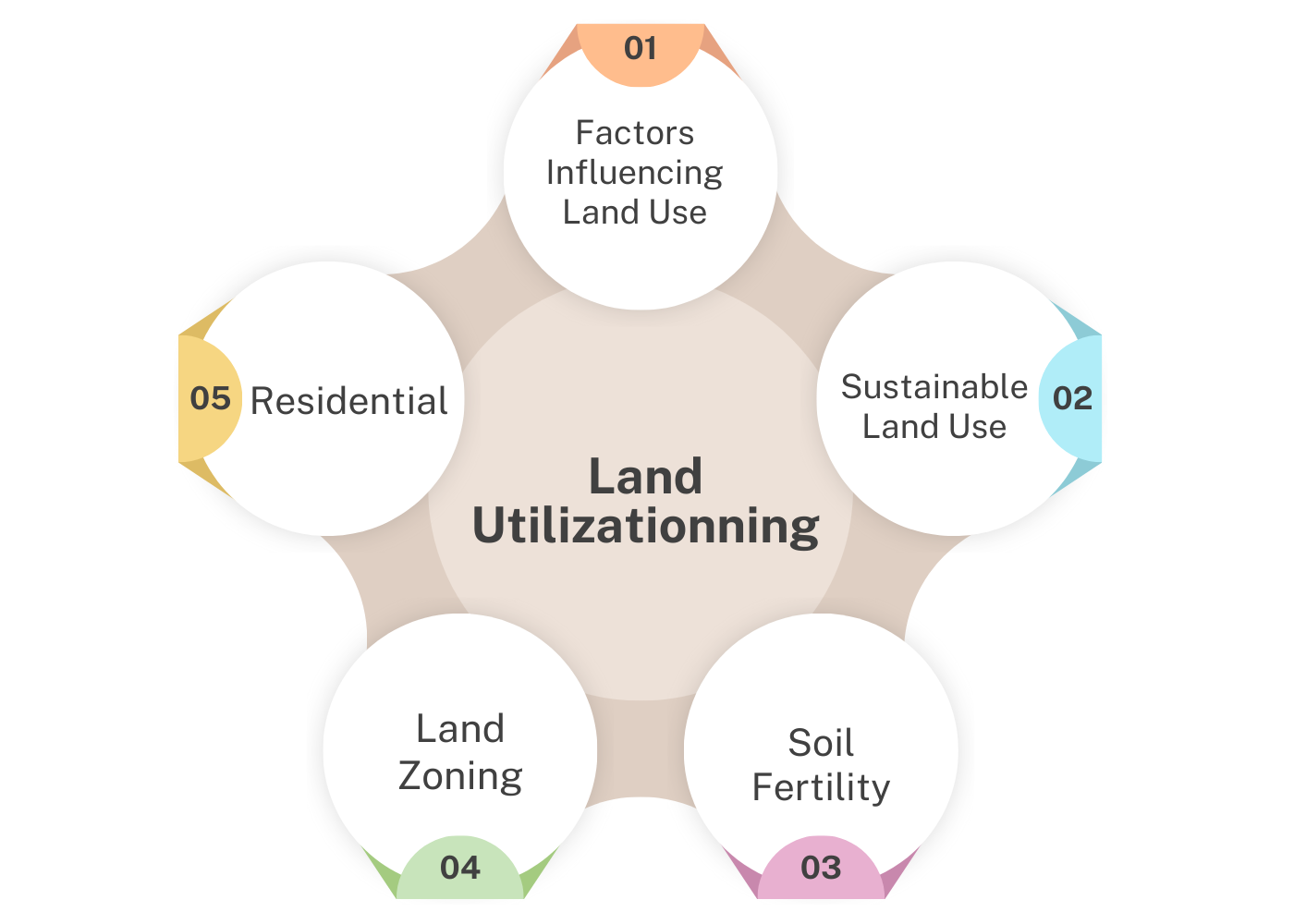Detailed content
1. Introduction to Land Utilization
Land utilization refers to the allocation and management of land for different purposes to meet the needs of society. It involves understanding the spatial distribution of land use types and the interactions between human activities and the environment. Land use patterns are influenced by a complex interplay of social, economic, political, cultural, and environmental factors.
2. Historical Context
The concept of land utilization has evolved over time in response to changing societal needs and technological advancements. In ancient civilizations, land use was primarily determined by subsistence agriculture and nomadic lifestyles. With the rise of urbanization and industrialization, there was a shift towards more intensive land use for residential, commercial, and industrial purposes. The Industrial Revolution marked a significant turning point, leading to rapid urban expansion and land transformation.
3. Methods of Assessment
Geographers and land use planners employ various methods to assess land utilization patterns and changes. Remote sensing technologies, Geographic Information Systems (GIS), aerial photography, field surveys, and satellite imagery are commonly used to collect, analyze, and visualize spatial data related to land use. These tools help in identifying land cover types, monitoring changes over time, and evaluating the impacts of human activities on the landscape.
4. Factors Influencing Land Use
Land use decisions are influenced by a wide range of factors, including physical, biological, economic, political, cultural, and technological factors. Physical factors such as climate, topography, soil fertility, and natural resources play a crucial role in determining the suitability of land for different uses. Economic factors such as market demand, land value, profitability, and investment incentives drive land use decisions in urban and rural areas. Political and regulatory factors, including zoning regulations, land tenure systems, property rights, and government policies, also shape land use patterns and development trajectories.
5. Types of Land Use
Land use can be broadly categorized into various types based on the primary activities conducted on the land. These include
a. Agricultural Land Use
Agriculture is one of the most significant land use activities, encompassing crop cultivation, livestock farming, and agroforestry practices. Agricultural land use patterns vary widely depending on factors such as climate, soil conditions, water availability, market demand, and cultural practices. Intensive farming methods, mechanization, and agricultural expansion have led to significant changes in land use patterns worldwide.
b. Urban Land Use
Urbanization is the process of population concentration in urban areas, leading to the expansion of cities and towns. Urban land use includes residential, commercial, industrial, and institutional activities, as well as transportation infrastructure, parks, and open spaces. The spatial distribution of urban land use is influenced by factors such as population growth, economic development, land availability, land values, infrastructure investment, and planning policies.
c. Industrial Land Use
Industrial land use involves the location of factories, warehouses, manufacturing facilities, and industrial parks. Industrial activities generate employment opportunities, stimulate economic growth, and contribute to urbanization and environmental pollution. Industrial land use decisions are influenced by factors such as proximity to transportation networks, access to raw materials and markets, labor availability, regulatory requirements, and environmental considerations.
d. Residential Land Use
Residential land use comprises areas designated for housing, including single-family homes, apartment buildings, condominiums, and gated communities. Residential land use patterns are shaped by factors such as housing demand, population density, income levels, land prices, urban sprawl, infrastructure provision, and zoning regulations. Residential development can have significant impacts on land cover, land values, and community dynamics.
e. Conservation and Natural Resource Management
Conservation land use aims to protect and preserve natural ecosystems, biodiversity, and cultural heritage sites. It includes national parks, wildlife reserves, protected areas, nature reserves, and wilderness areas. Conservation efforts focus on maintaining ecological balance, safeguarding endangered species, restoring degraded landscapes, and promoting sustainable use of natural resources. Conservation land use is guided by principles of environmental stewardship, ecological resilience, and community participation.
f. Recreational and Tourism Land Use
Recreational land use encompasses areas designated for outdoor recreation and tourism activities, such as parks, beaches, camping grounds, hiking trails, and tourist resorts. Recreational land use provides opportunities for leisure, relaxation, and cultural experiences, contributing to physical and mental well-being. Tourism development can have both positive and negative impacts on the environment, including increased infrastructure demand, habitat degradation, and cultural commodification.
6. Sustainable Land Management Practices
Sustainable land management seeks to balance economic development with environmental conservation and social equity. It involves adopting practices that enhance the productivity, resilience, and long-term viability of land resources while minimizing negative impacts on ecosystems and communities. Key principles of sustainable land management include
• Conservation and restoration of natural ecosystems
• Promotion of agroecological farming practices
• Integrated land use planning and management
• Sustainable urban and rural development
• Community-based natural resource management
• Climate change adaptation and mitigation strategies
• Stakeholder engagement and participatory decision-making
7. Future Challenges and Opportunities
The future of land utilization faces numerous challenges, including population growth, urbanization, climate change, food security, biodiversity loss, land degradation, and natural resource depletion. Addressing these challenges requires innovative approaches and collaborative efforts at local, national, and global levels. Opportunities for sustainable land utilization include
• Adoption of advanced technologies for land monitoring and management
• Implementation of land use planning policies and regulations
• Promotion of sustainable agriculture and land restoration practices
• Investment in green infrastructure and renewable energy
• Enhancement of ecosystem services and biodiversity conservation
• Integration of traditional knowledge and indigenous land management practices
• Capacity building and education on sustainable land use practices
Conclusion
Land utilization is a multifaceted concept that plays a central role in shaping human-environment interactions and sustainable development outcomes. Understanding the dynamics of land use, identifying drivers of change, and promoting sustainable land management practices are essential for achieving environmental integrity, social equity, and economic prosperity. By recognizing the intrinsic value of land resources and adopting holistic approaches to land utilization, we can ensure the well-being of current and future generations while safeguarding the planet's ecological health and resilience.
